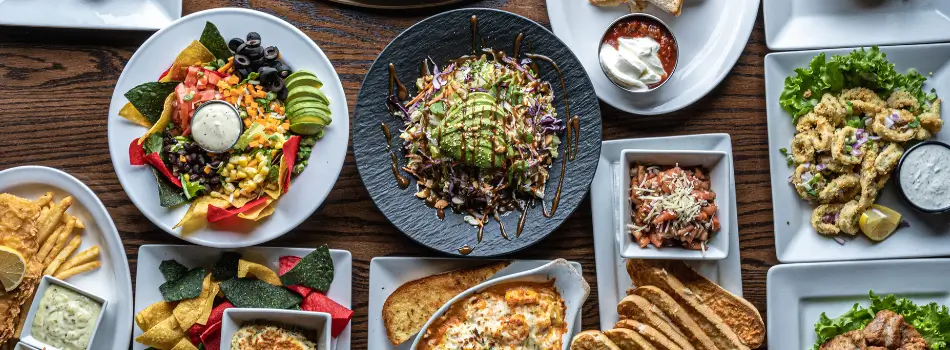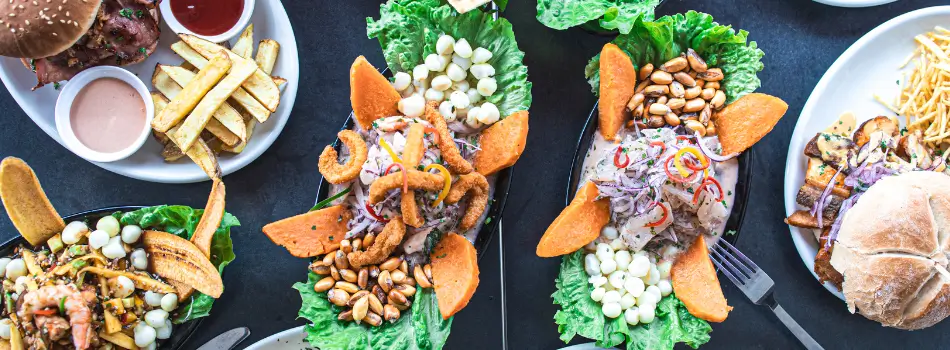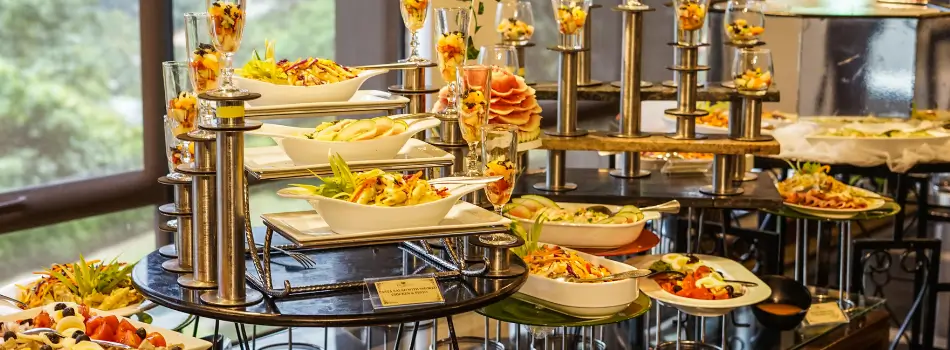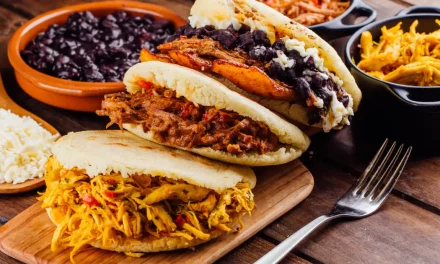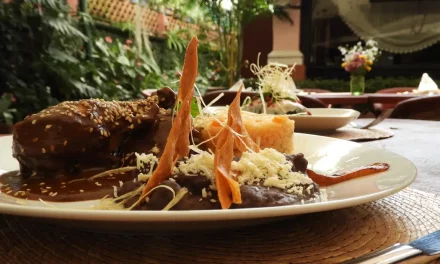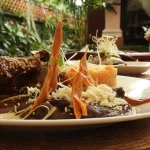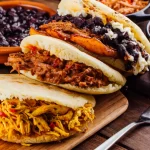American cuisine is a vibrant and ever-evolving reflection of the United States’ history, culture, and diversity. It is not a single style or flavor, but rather a fusion of many. Shaped by generations of immigrants, Native traditions, and regional landscapes, it has grown into one of the most diverse culinary traditions in the world. From coast to coast, you’ll find a stunning variety of dishes, cooking techniques, and ingredients that showcase a nation shaped by both its past and its innovation.
Whether you’re exploring the smoked brisket of Texas, the creamy clam chowder of New England, or the spice-kissed Creole dishes of Louisiana, American cuisine invites you to taste its identity—bold, diverse, comforting, and inventive. This comprehensive guide delves deep into the multifaceted nature of American cuisine, breaking it down by regions, cultural influences, and modern trends, all while celebrating the dishes that define a nation’s plate.
American cuisine and Its Regional Diversity
America’s vast geography and varied climate give rise to a remarkable range of regional culinary traditions. This regionalism is a defining trait of American cuisine, offering everything from seafood feasts in the Northeast to hearty meat-based dishes in the Midwest.
Across the fifty states, local customs, native ingredients, and historical influences create a food landscape that shifts dramatically from one region to another. These distinctions are not just flavors—they’re stories of migration, settlement, adaptation, and innovation. The more you explore regional American cuisine, the more you uncover the heart of each community through its food.
Southern American cuisine: Comfort Food with Deep Roots
Few regions are as closely associated with the idea of “comfort food” as the American South. Southern American cuisine is hearty, soulful, and deeply rooted in history. It brings together African, Native American, and European influences, resulting in rich and memorable dishes like fried chicken, cornbread, collard greens, grits, and gumbo.
Soul Food and African-American Influence
At the core of Southern American cuisine is soul food—a culinary tradition born in African-American communities and carried through generations as a symbol of endurance, identity, and love. Dishes such as chitterlings, oxtail, sweet potato pie, and black-eyed peas are more than meals; they are memories. They represent gatherings, Sunday dinners, and cultural preservation.
Barbecue Culture in the South
Barbecue is sacred in the South. It’s not just a way of cooking—it’s a tradition. Each state brings its own unique spin to American cuisine through barbecue: slow-smoked pork in North Carolina, dry-rubbed ribs in Memphis, or white sauce-drenched chicken in Alabama. It’s often enjoyed outdoors, surrounded by friends and family, making it one of the most communal food experiences in America.
New England American cuisine: Seafood and Simplicity
In the northeastern corner of the country, American cuisine takes on a briny, maritime character. New England is known for its cold Atlantic waters and a cuisine that emphasizes seafood, seasonal produce, and simplicity.
Colonial Influence and Seasonal Cooking
New England’s cooking is steeped in colonial history. Foods like baked beans, Indian pudding, and Johnnycakes speak to a time when preservation and hearty sustenance were essential. Clam chowder, perhaps the region’s most iconic dish, reflects both local abundance and old-world restraint.
Today, New England American cuisine is about honoring those traditional flavors while also embracing sustainability, farm-to-table practices, and elevated versions of old favorites—like lobster mac and cheese or artisanal cider pairings.
Midwestern American cuisine: Hearty and Homey
The Midwest may not get the same culinary attention as the coasts, but it offers one of the purest expressions of comfort in American cuisine. This is the land of casseroles, roasts, buttered corn, and the all-American potluck.
The strong immigrant roots of the Midwest continue to shape its food. German, Polish, and Scandinavian communities have left their mark through sausages, dumplings, pickles, and hearty breads. In states like Wisconsin and Minnesota, you’ll find dishes like lutefisk, bratwurst, and krumkake gracing holiday tables, showcasing a powerful sense of culinary continuity.
Whether you’re in Chicago biting into a deep-dish pizza or enjoying a meat-and-potatoes dinner on a Nebraska farm, Midwestern American cuisine delivers honest, filling, and time-tested meals.
Western American cuisine: Fusion and Fresh Ingredients
In the West, particularly in states like California, Oregon, and Arizona, American cuisine is experimental, fresh, and deeply influenced by international cultures. You’ll find bold fusions, health-conscious alternatives, and a passionate embrace of farm-to-table dining.
California and the Farm-to-Table Movement
California has pioneered a new style of American cuisine that champions fresh, local, and sustainable ingredients. From Napa Valley’s wine-soaked dishes to San Francisco’s sourdough heritage, the Golden State leads in innovation. Avocado toast, quinoa bowls, artisanal pizzas, and fusion tacos all reflect the state’s culinary ethos.
Tex-Mex and Border Flavors
Western states like Texas and New Mexico contribute a fiery, flavorful component to American cuisine—Tex-Mex. This cross-cultural fusion features tacos, enchiladas, queso, and smoky chili, drawing from Mexican traditions while incorporating distinctly American adaptations. It’s bold, spicy, and impossible not to love.
Pacific Northwest American cuisine: Forest Meets Sea
The lush, misty landscape of the Pacific Northwest creates a unique expression of American cuisine. Here, salmon, wild berries, mushrooms, and artisanal coffee form the foundation of a culinary culture that emphasizes earthiness and elegance.
Native American Culinary Roots
In this region, American cuisine often overlaps with Indigenous cooking methods and ingredients. Dishes like cedar-planked salmon, wild rice casseroles, and huckleberry jams reconnect food with place and history. Many chefs are now working to honor these original foodways in their menus, celebrating the Pacific Northwest’s native culinary legacy.
American cuisine and Immigrant Contributions
America’s culinary landscape would be unimaginable without the influence of immigrants. Every wave of migration added new layers of flavor, from Italian pasta to Vietnamese pho, each finding a home within American cuisine.
Italian-American Favorites
Pizza, lasagna, meatballs, and chicken Parmesan may have started as Italian imports, but they’ve become stars in American cuisine. Over time, these dishes evolved to suit local tastes—more cheese, bigger portions, and bold sauces.
Jewish-American Delicacies
Jewish immigrants brought bagels, pastrami, gefilte fish, and rye bread to cities like New York and Chicago. Today, these items are fixtures in American delis and brunch menus. American cuisine owes much to these flavors, which introduced a balance of comfort and sophistication.
Asian-American Culinary Fusions
General Tso’s chicken, sushi rolls, banh mi sandwiches—Asian-American dishes embody innovation within American cuisine. Chefs continue to blur the lines between east and west, creating meals that surprise and delight with each bite.
Fast Food and Its Role in American cuisine
Fast food might not seem gourmet, but it’s undeniably central to the American dining experience. From golden fries to crispy chicken sandwiches, this aspect of American cuisine reflects speed, consistency, and indulgence.
The Rise of National Chains
Chains like McDonald’s, Wendy’s, and Taco Bell have taken American cuisine global. They offer a specific type of satisfaction rooted in predictability and affordability. Although criticized for their health impact, they remain a symbol of American culture and economic innovation.
Fast Casual and Gourmet Reinventions
A new wave of eateries—Chipotle, Panera, Shake Shack—has elevated American cuisine by merging convenience with quality. Organic ingredients, customizable menus, and eco-friendly packaging reflect a modern American’s evolving values.
American cuisine During Holidays and Celebrations
Holidays bring out the most celebratory aspects of American cuisine. Seasonal meals and traditional recipes are passed down through generations, bringing families and friends together.
Thanksgiving and Its Symbolism
Thanksgiving is perhaps the ultimate expression of American cuisine. Roast turkey, stuffing, mashed potatoes, cranberry sauce, and pumpkin pie form a meal that is as symbolic as it is delicious. It’s a day of reflection, gratitude, and culinary abundance.
Fourth of July and Grilled Traditions
On Independence Day, grills fire up across the country. Burgers, hot dogs, corn, watermelon, and lemonade dominate tables. It’s casual, communal, and pure Americana—proof that American cuisine shines brightest when shared.
American cuisine, traditional American dishes, American cooking, Southern American food, regional American meals, American BBQ, American recipes, American culinary styles, American comfort food, American food diversity
Modern Trends in American cuisine
As culture shifts, so does the American palate. Chefs, home cooks, and foodies are constantly reinterpreting what American cuisine can be.
Plant-Based and Health-Conscious Dishes
The surge in vegan and vegetarian diets has introduced new staples to American cuisine. Beyond burgers, almond milk, cauliflower wings, and jackfruit BBQ have gone mainstream, proving that health doesn’t mean bland.
Revival of Ancestral and Forgotten Recipes
Chefs are also looking backward, reviving heirloom grains, pickling techniques, and ancient fermentation practices. These forgotten foods enrich American cuisine with deeper narratives and more sustainable approaches.
The Role of Social Media and Food Culture
Platforms like Instagram and TikTok have turned food into visual art. Dishes now go viral—think rainbow bagels, “smash” tacos, and birria quesadillas. These trends are shaping the aesthetics of American cuisine, making it as much about experience as taste.
Conclusion: Why American cuisine Matters
In the end, American cuisine is more than just a collection of recipes. It’s a map of a nation’s soul—diverse, bold, messy, and always evolving. Each bite tells a story of who Americans are, where they come from, and where they’re going. Whether you’re feasting on tradition or trying the next big food trend, you’re part of this delicious, ongoing journey.



